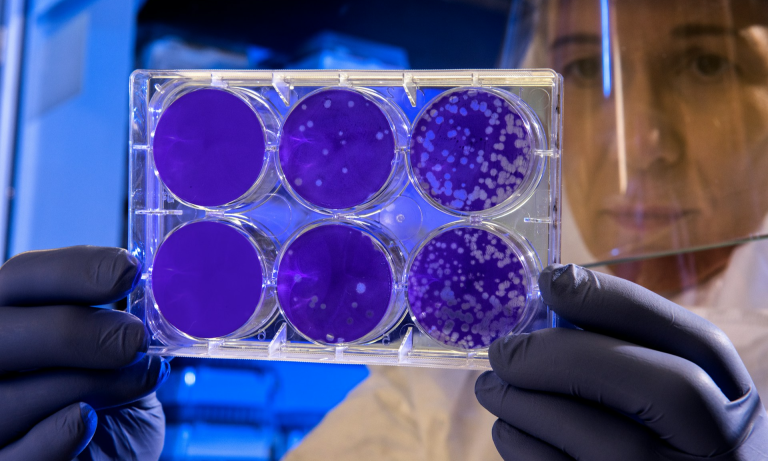AI Offers Quicker Detection of Drug-Resistant Bacteria

A new study from the University of Cambridge suggests artificial intelligence (AI) could significantly accelerate the detection of antibiotic-resistant bacteria.
Published in Nature Communications, the research demonstrates a machine-learning model capable of identifying drug-resistant Salmonella Typhimurium from microscope images, potentially reducing diagnosis time compared to traditional methods. It’s part of a growing push to use AI to detect disease and find new drugs for treatments.
“We believe there is huge potential for better diagnostics to radically change healthcare and pharma,” Meri Beckwith, co-founder of Lindus Health, a company focused on accelerating clinical trials that was not involved in the Cambridge study, told PYMNTS.
“Traditionally, diagnostics have been overlooked by the industry and by investors, as there is less commercial payoff in detecting a disease versus curing it with potentially long courses of a drug,” Beckwith said. “This is changing as healthcare systems come under more pressure to reduce costs and improve efficiency, and better diagnostics can play a big role here.”
Healthcare’s focus on prevention is boosting the diagnostic tech market. This shift creates new revenue opportunities in the evolving healthcare industry.
Searching for Clues
Advances in AI-powered medical imaging technology are opening new commercial opportunities in healthcare diagnostics and drug development. In the Oxford study, researchers used high-powered microscopes to examine S. Typhimurium samples exposed to varying concentrations of ciprofloxacin, a common antibiotic. They identified five key imaging features distinguishing between resistant and susceptible bacteria and then trained a machine-learning algorithm using data from 16 samples.
The computer program could tell if bacteria would resist the antibiotic without actually using the drug. It did this after growing bacteria for just 6 hours, which is much faster than the usual tests, which take 24 hours.
“The beauty of the machine learning model is that it can identify resistant bacteria based on a few subtle features on microscopy images that human eyes cannot detect,” Tuan-Anh Tran, who worked on this research.
Commercial Implications and Industry Impact
The potential applications of AI technology could be significant for the healthcare and pharmaceutical industries. Rapid and accurate diagnosis of antibiotic-resistant infections might lead to more targeted treatment strategies.
“This valuable time saved can be used to lock down infections before they spread,” Beckwith said. However, Beckwith also cautioned that further validation would be necessary: “Each application will need to undergo specific trials to show a cost, accuracy or speed benefit over the current gold standard before it can be adopted.”
Drug-resistant bacteria are becoming a serious global health threat. These “superbugs” have evolved to withstand common antibiotics, making infections harder to treat. The overuse and misuse of antibiotics in healthcare and agriculture have sped up this process. As a result, simple infections that were once easily cured can now become life-threatening. Doctors are running out of effective treatment options for some bacterial infections.
Future Directions
AI can help doctors diagnose illnesses more quickly and correctly in many areas of medicine.
Tech giants and startups are racing to develop AI-powered tools that could transform healthcare. Google’s DeepMind, for instance, has created an AI system capable of detecting breast cancer in mammograms with greater accuracy than human radiologists. In a study published in Nature, the system reduced false positives by 5.7% and false negatives by 9.4% compared to human experts.
In 2018, IDx Technologies received FDA approval for its AI-based system that detects diabetic retinopathy. The software analyzes retinal images and provides an immediate diagnosis, potentially increasing screening rates in underserved areas.
Researchers at MIT have developed an AI modelthat can detect Alzheimer’s disease years before symptoms appear. By analyzing brain scans, the system identifies subtle patterns associated with early-stage Alzheimer’s, potentially allowing for earlier intervention.
AI has also contributed to the fight against COVID-19. Infervision’s AI software, deployed in Chinese hospitals, rapidly analyzes chest CT scans to detect signs of coronavirus pneumonia, helping prioritize treatment cases.
The research team plans to study more types of bacteria and antibiotics. They want to create a system that can find drug-resistant germs in samples like blood, urine or spit. This could help doctors treat infections better in the future.
“What would be really important, particularly for a clinical context, would be to be able to take a complex sample and identify susceptibility and resistance directly from that,” Sushmita Sridhar, who initiated this project while a PhD student at Cambridge and is now a postdoc at the University of New Mexico and Harvard School of Public Health, said in the news release. “That’s a much more complicated problem and one that really hasn’t been solved at all, even in clinical diagnostics in a hospital.”